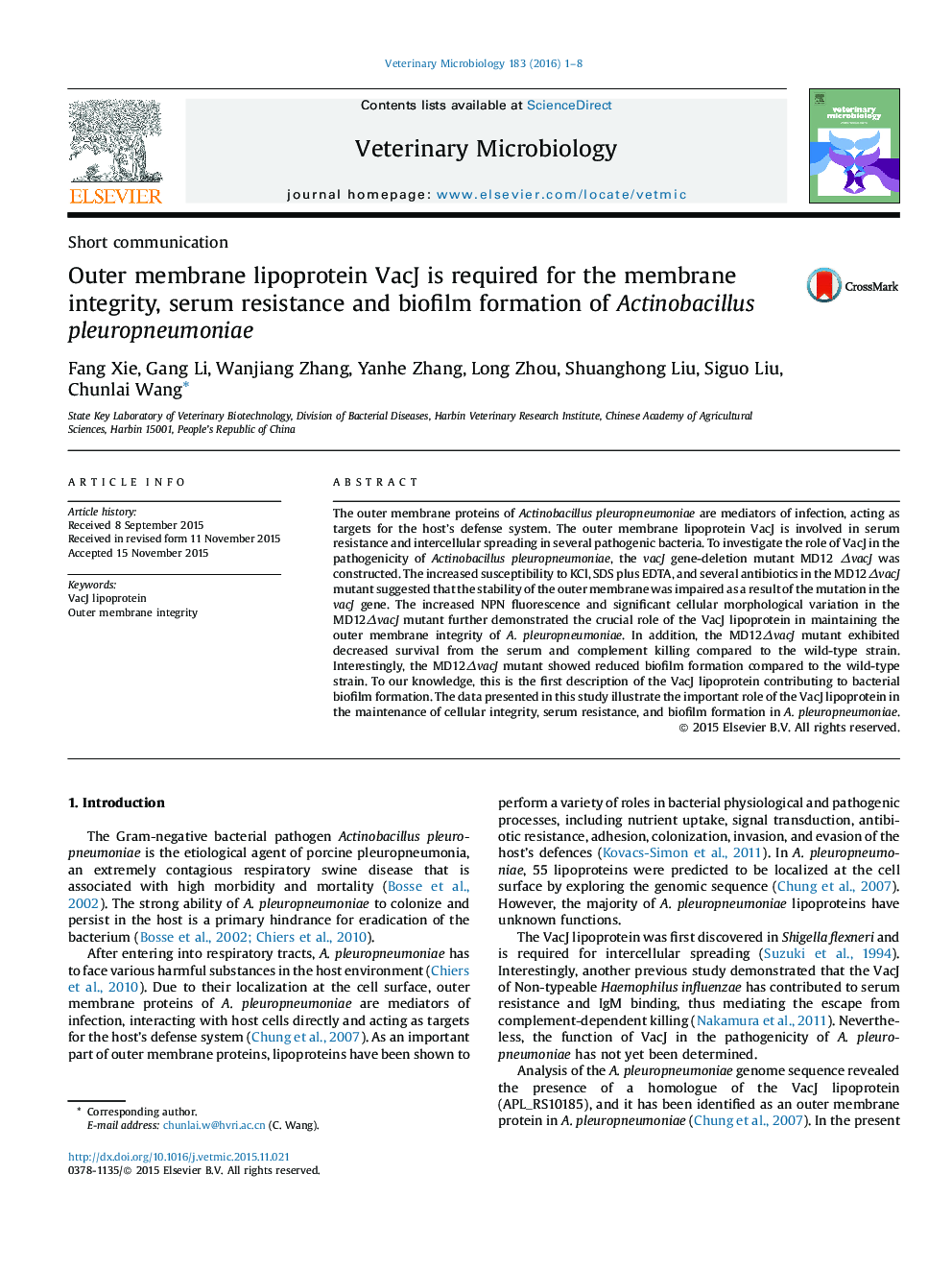| Article ID | Journal | Published Year | Pages | File Type |
|---|---|---|---|---|
| 5799793 | Veterinary Microbiology | 2016 | 8 Pages |
â¢A. pleuropneumoniae vacJ gene deleted mutant MD12 ÎvacJ was constructed.â¢VacJ was implicated in maintaining the outer membrane integrity.â¢Deleting the vacJ gene increased susceptibility to complement-dependent killing.â¢Deleting the vacJ gene attenuated biofilm formation.
The outer membrane proteins of Actinobacillus pleuropneumoniae are mediators of infection, acting as targets for the host's defense system. The outer membrane lipoprotein VacJ is involved in serum resistance and intercellular spreading in several pathogenic bacteria. To investigate the role of VacJ in the pathogenicity of Actinobacillus pleuropneumoniae, the vacJ gene-deletion mutant MD12 ÎvacJ was constructed. The increased susceptibility to KCl, SDS plus EDTA, and several antibiotics in the MD12ÎvacJ mutant suggested that the stability of the outer membrane was impaired as a result of the mutation in the vacJ gene. The increased NPN fluorescence and significant cellular morphological variation in the MD12ÎvacJ mutant further demonstrated the crucial role of the VacJ lipoprotein in maintaining the outer membrane integrity of A. pleuropneumoniae. In addition, the MD12ÎvacJ mutant exhibited decreased survival from the serum and complement killing compared to the wild-type strain. Interestingly, the MD12ÎvacJ mutant showed reduced biofilm formation compared to the wild-type strain. To our knowledge, this is the first description of the VacJ lipoprotein contributing to bacterial biofilm formation. The data presented in this study illustrate the important role of the VacJ lipoprotein in the maintenance of cellular integrity, serum resistance, and biofilm formation in A. pleuropneumoniae.
